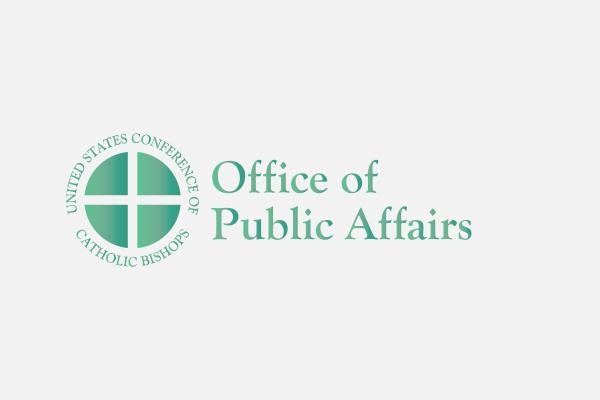Ordination Class of 2016: Encouragement, Active Participation in Parish Life, Ministry, Are Key Factors in Discernment Process, Answering the Call
WASHINGTON—The 2016 class of men ordained to the priesthood report that they were, on average, about 17 when they first considered a vocation to the priesthood and encouraged to consider a vocation by an average of four people.
WASHINGTON—The 2016 class of men ordained to the priesthood report that they were, on average, about 17 when they first considered a vocation to the priesthood and encouraged to consider a vocation by an average of four people. Seven in 10 (70 percent) say they were encouraged by a parish priest, as well as friends (48 percent), parishioners (46 percent), and mothers (42 percent). On average, they lived in the diocese or eparchy for which they will be ordained for 15 years before entering seminary. Religious ordinands knew the members of their religious institute an average of five years before entering.
The total number of potential ordinands for the class of 2016, 548, is slightly down from 595 in 2015 and up from 477 in 2014.
Bishop Michael F. Burbidge of Raleigh, North Carolina, chair of the U.S. bishops' Committee on Clergy, Consecrated Life and Vocations, found that the data gave reason for hope but also provide areas for further growth.
"Each path to the priesthood begins with a call from Christ. In fact, 93 percent of priests ordained this year were encouraged to consider whether God was calling them to priesthood by someone close to them," Bishop Burbidge said. "This is a powerful reminder of how we are all able to be instruments in helping others to discern God's Will."
The Georgetown University-based Center for Applied Research in the Apostolate (CARA) gathered the date for "The Class of 2016: Survey of Ordinands to the Priesthood." CARA collects the data annually for the U.S. bishops' Secretariat for Clergy, Consecrated Life and Vocations. Approximately 80 percent of the 548 potential ordinands reported to CARA. These 440 respondents include 352 ordinands to the diocesan priesthood, from 140 different dioceses and archdioceses, and 88 ordinands to the religious priesthood.
The full report can be found online: www.usccb.org/beliefs-and-teachings/vocations/ordination-class/index.cfm
Among the survey's major findings:
″ The average age for the Class of 2016 is 35. The median age (midpoint of the distribution) is 32. Eight in 10 respondents are between 25 and 39. This distribution is slightly older than in 2015, but follows the pattern in recent years of average age at ordination in the mid-thirties.
″ Two-thirds (66 percent) report their primary race or ethnicity as Caucasian/European American/white. Compared to the adult Catholic population of the United States, they are more likely to be of Asian or Pacific Islander background (15 percent of responding ordinands), but less likely to be Hispanic/Latino (14 percent of responding ordinands). Compared to diocesan ordinands, religious ordinands are less likely to report their race or ethnicity as Caucasian/European American/white.
″ Three in 10 of the ordinands (30 percent) were born outside the United States, with the largest numbers coming from Colombia, Mexico, the Philippines, Poland and Vietnam. On average, respondents born in another country have lived in the United States for 13 years. Between 20 and 30 percent of ordinands to diocesan priesthood for each of the last ten years were born outside of the United States.
″ Most ordinands have been Catholic since infancy, although 8 percent became Catholic later in life. Eighty-two percent report that both of their parents are Catholic and more than a third (35 percent) have a relative who is a priest or a religious.
″ More than half completed college (59 percent) before entering the seminary. One in six (18 percent) entered the seminary with a graduate degree. The most common fields of study for ordinands before entering the seminary are theology or philosophy (20 percent), liberal arts (20 percent), and business (13 percent).
″ Nearly half of responding ordinands (45 percent) attended a Catholic elementary school, which is a rate slightly higher than that of all Catholic adults in the United States. In addition, ordinands are somewhat more likely than other U.S. Catholic adults to have attended a Catholic high school and they are much more likely to have attended a Catholic college (41 percent, compared to 7 percent among U.S. Catholic adults).
″ Five in ten ordinands (52 percent) report some type of full-time work experience prior to entering the seminary, most often in education. Five percent of responding ordinands report prior service in the U.S. Armed Forces. About one in seven ordinands (14 percent) report that either parent had a military career in the U.S. Armed Forces.
″ Seven in 10 (70 percent) indicate they served as an altar server and about half (53 percent) reporting service as a lector. One in six (17 percent) participated in a World Youth Day before entering the seminary.
″ About seven in 10 report regularly praying the rosary (73 percent) and participating in Eucharistic adoration (73 percent) before entering the seminary.
″ About half (51 percent) indicated that they were discouraged from considering the priesthood. On average, one to two individuals are said to have discouraged them.
---
Keywords: ordination, class of 2016, Bishop Michael F. Burbidge, priesthood, U.S. Conference of Catholic Bishops, USCCB, Center for Applied Research in the Apostolate, CARA, Secretariat for Clergy, Consecrated Life and Vocations, diocesan priesthood, religious life
# # #
MEDIA CONTACT
Norma Montenegro Flynn
O: 202-541-3202
16-046
Sec,CathPress,DD,DioNewspapers,CNS,RNS,Crux

